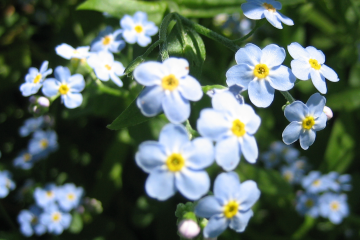
There comes a point in late August when time stops; the garden grows quiet, suspended; the plants have finished growing but have not yet started to die; there is enormous energy but it is not going anywhere. Really, there is nothing to do but sit and look.
I love late August in my garden. It is too early to transplant and too late to worry about weeds. The lawn needs attention but that is a mid-September project. I could deadhead but why bother, and besides I love the look of the deadheads tumbling in and among the still blooming. I can see that the phlox need to be divided but that is a job for next spring; today I can enjoy their excess, the way they push against and into the boxwoods and the smokebush. Everything is lush. The garden has stopped just short of being overgrown and chaotic. For the moment it is static in its plenitude, providing endless moments of beauty and surprise. And so I sit in those chairs that I placed throughout the garden in June and have not used until now and I look.
The butterfly bush (Buddleia) actually attracts butterflies and from my office window I can watch them swarm and I see that there are butterflies in the world other than monarchs. In the white garden I see flashes of yellow as the goldfinch dart in, perch on the dead echinacea blooms, and peck out the seeds. I see that some pink phlox has come up in the midst of my mass of white. I have no idea how it got there but it will have to go. This is a task I could do now, but I probably won’t. It is better to let late August last into early September and to keep looking. The pink and white cleome which also came up on their own can stay; they are annuals, and besides they are pink and white, and stranger still, their pink, unlike the phlox’s pink, makes the white of the white phlox and white echinacea and white coral bells even whiter.
In the red garden there is unplanned pink as well (I am beginning to think that pink is the color to which all plants revert when they get tired of being special) but who cares, for the eye is held by the saucer-size lipstick-red blooms of the perennial hibiscus, propped up by the magenta lobelia. The ‘dwarf’ castor bean has grown to the size of a small tree and its bright red seed pods shoot up like exclamation points. The lovely new paths I created for this garden are now impassable as salvia, bee balm, and phlox sprawl over the stones. For the first time my crabapple tree actually has dark red apples that I can see from a distance; the late blooming Seven Son’s tree has finally flowered, its blooms will last for several weeks; and then they too will turn red. And everywhere, in the midst of it all, come the red-orange cannas that I started late and thought would never make it
As I sit and look, I take pencil and paper, for this is a time of year when one can see the bones of the garden in spite of, or perhaps because of, the lushness. Just as in winter, in late August the garden stands still long enough for me to see it whole. My head races with ideas. I can see where another paperbark maple should be planted. Sara wants a vegetable garden and to create it we have to move a large rock. I can see where to put it; I can see where to put other rocks too. I can see that a saucer magnolia will provide the sense of an ending to the garden that begins across the front of the house, sweeps around the south side, surrounds the patio, runs down the north side of the back yard, includes the blue spruces that line the back of the property, and stops at what started out as a demonstration shrubbery. I can even see how to finish the grand design of the entire garden!
Yes, plans are afoot for making a vegetable garden for Sara next year and perhaps taking down one of the pear trees to give her more space, but for now, when I finally must do something other than sit and look, I saunter by my favorite pear tree, pull off an almost ripe pear, and crunch it down, tasting in its juice the full sweetness of this particular moment of peace and quiet in the garden.